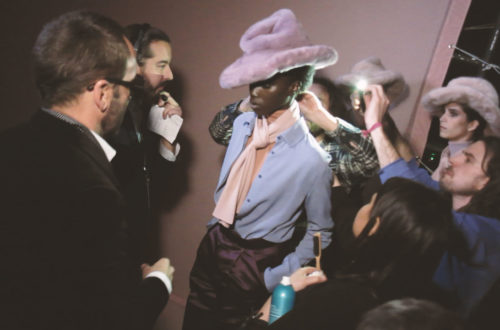On the 18th of March a headline: “Prada Loses $864 Million in Value as China Slump Hits Profit” was published on Bloomberg.
For many it might seem as a mere piece of everyday financial news, but in fact it is a signal of changes in the luxury industry, in particular personal luxury goods, or fashion.
Fifteen, or even ten years ago the effects of shocks in spending habits of Asian customers could in no way be compared to what we see now. Although Europe still holds the leading position in terms of sales, it is the Chinese consumer that drives the positive growth trends in terms of sales. As can be seen in Figure 5 from the Fall-Winter 2018 Luxury Goods Worldwide Market Study performed by Bain, the role of both Chinese and other Asian luxury consumers is only growing, diminishing the role of their European counterparts.

However, China is not the single driver of tomorrow. On one hand, Japan has an already established luxury customer base; on the other hand, South Korea, Singapore, Thailand, Taiwan, Vietnam, and the Philippines are still growing theirs. According to Bain’s report, these countries experienced a 9% sales growth just in 2018.
All this data points to one conclusion: the customer basis for luxury goods is changing and expanding at the same time. It is no longer relevant to base one’s strategies solely on the established European or American market. The former in particular has been at the core of fashion as we know it, since the 1920s. Yet, the combination of growing wealth and incomes of the middle classes in other parts of the world, such as China after 1990s, and the deepening of immersion into technologically advanced, and online-based world are driving the change.
Consequently luxury companies, such as Prada, are becoming gradually more reliant on this new customer base. At the same time, this customer base is growing in influence over profits of those same companies.
In line with regional shifts, luxury companies have to also focus on e-commerce. They need to innovate in order to maintain relevance in the world, in which spending will be driven by Millennials, but also Generations Y and Z in the years to come.
Not surprisingly internet is key in Chinese purchase habits. The growing power of online-influencers, combined with a new luxury customer base vs. an experienced one, created a demand for constant stimuli, which have to be immediately addressed.
This is even more challenging, taking into consideration that contrary to European customers in Germany, Italy, or France, who prefer to spend money on luxury products at home, the Asian, and in particular Chinese consumers represent an opposite trend. Due to a high degree of price awareness in the face of currency fluctuations, Chinese consumers shift their demand to Europe, South Korea, or Japan. This complicates the business cycle. However, Bain’s predictions for 2025 state that as Chinese consumers will approach dominance in the global market, as the number of domestic purchases will increase (from 20% to 50%).

Overall, it can be concluded that Asia has emerged as a growth engine when it comes to luxury purchases. However, those optimistic consumers require often more than brands are used to. Making a purchase is no longer only about an investment for the years to come, but also about trends, fads, and luxury experience.
The key is to be able to adapt and keep up with the pace. For example, although due to the weakness of the yuan Chinese consumers limit their consumption in Hong Kong, or Macau, the growing demand in mainland China was able to offset the losses for Kering or LVMH. Prada, on the other hand, did not follow the trend, experiencing a slump.
Therefore, what is important here is to realise that the industry is changing. The pace has gone up, and the purpose, as well as the definition of luxury is being remodelled.
by Zuzanna Kalwat






